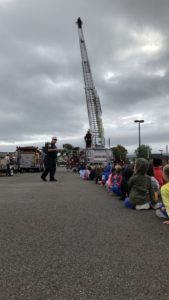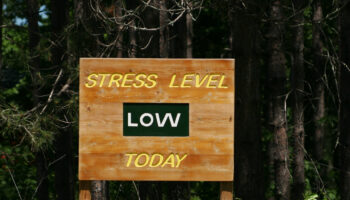Natalie Grebe
Now that classrooms are settling into a new school year, many teachers will be planning Fall activities and themes. In Pennsylvania, October not only means chillier days on the playground and colored leaves in the Science Center, but also Fire Prevention Week. Many local fire departments host community events at their station and chances are your school has a day in October when the local fire company visits. Perhaps firefighters talk with the children as a class, show them some of their equipment and even allow them to sit in a firetruck. Of course, this is a great opportunity for the children. Seeing firefighters up close, in uniform, and learning from the experts about how to deal with fire is a valuable experience. However, even if these firefighters do an amazing presentation, there are multiple ways to extend the learning beyond that one visit.
Prior to and after Fire Prevention Week, consider each area of your classroom and how it could be enriched with related materials. Some suggestions include:
Books
Books related to the topics of Fire Prevention and Safety can be read to the children and can be a great way to get conversation started. “Fire! Fire!” by Gail Gibbons and “What Does a Firefighter Do?” by Ellen Catala are just two choices for books that can give an appropriate but realistic view of fire safety. When reading to the group, observe how the children react. Many will get excited about the trucks, tall ladders and heavy equipment used by firefighters. Some will have stories of their own. But a few may become uncomfortable. It is not uncommon for children to have a fear of not only fire, but even firefighters. Observe your class as your read and discuss. Are some children moving uncomfortably or avoiding participation? Are they reluctant to talk? These children will need extra reassurance from teachers. They may have a past experience with fire or do not understand what to do when in a dangerous situation. Teaching them about staying low in smoky areas, when to “Stop Drop and Roll” and showing them what a firefighter may look and sound like with their masks and protective clothing on may put them at ease. As always, add books to the children’s reading center so they can look at them on their own.
Blocks

Supplement the block area with toy firetrucks, ambulances and firefighter figures. Children can use the blocks to make buildings, houses and even bridges for the trucks to drive over and under. Encourage conversation among the children in the center to review what they have learned about fire safety.
Dress Up/Pretend Play
Adding firefighter costumes and pretend equipment will certainly pique the interest of young children. It is not necessary to completely transform this space into a firehouse. Simply add materials to what is already there. For coats, yellow raincoats with thick black or reflective tape can be an inexpensive work-around to buying manufactured costumes. Does a parent have an old garden hose? Cut off a two to three-foot section for children to use. A large piece of cardboard could be transformed (with help from the class) into a firetruck large enough for them to sit behind.
School-wide
Beyond supplementing your classroom with appropriate materials, it is important that your school community utilizes this time to teach fire safety to both children and teachers. During routine fire drills are the alarms triggered so children will be aware of what this will sound like during a real fire? Are ALL employees required to evacuate, including cooks and maintenance staff? While the alarms may frighten some children and although leaving your classroom is disruptive to your day, these drills are vital in keeping calm and being prepared should a real emergency occur. Following each fire drill review with the children why fire drills are important.
Parent Follow-Up
Once the children have become more familiar with fire prevention and safety, it is a great idea to encourage families to continue the conversation at home. Children will feel more secure if they know what to do in a fire both at school and at home. Depending on the age of your class, create an appropriate homework assignment for them. This does not need to be a written question and answer assignment. Younger children can illustrate their answers. Or, spark conversation at pick up time by posting a question on your daily communication board. Another option is to assign parents a topic to discuss during the car ride home. Suggested follow up would include:
- My family has a meeting place outside our house. It is…
- I learned 2 ways out of my house. They are…
- The batteries in our smoke detector were last changed…
- My parents set off the smoke detector so I could hear what it sounded like. It was…
- I practiced rolling out of my bed and crawling on the floor to the door. It was…
As fire prevention and safety are needed year-round, it is vital to give children more than 1 day or even 1 week to successfully learn about this topic. With a bit of planning and support from families and administration, you can give children the knowledge and comfort they need to be safe in these situations.
Additional Fiction and Non-Fiction Books:
Fighting Fires by Susan Kuklin
Sparky the Fire Dog by Don Hoffman
Firefighters Help Us by Aaron R. Murray
Helpful Websites:
7 Activities for Teaching Kids About Fire Safety




